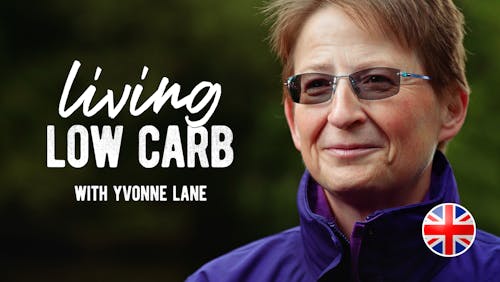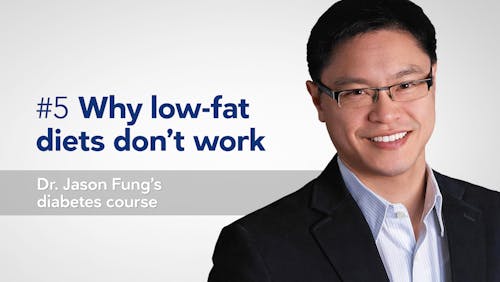Six principles of successful self-management of type 1 diabetes

If you have type 1 diabetes, you will know just how difficult it can be to get under control. It takes a lot of effort – several injections every day, regular checks of your glucose level, keeping tabs on what you eat – and even if you do all that is required, sometimes the diabetes just takes on a life of its own and throws a spanner in the works. Sometimes this just causes a bit of inconvenience, like having to manage a high glucose level; sometimes however, you can experience a really bad hypo, for what might seem like no reason at all.
Type 1 diabetes results from an immune attack on the beta cells that produce insulin. That means, a person with type 1 diabetes lacks the hormone insulin. Unlike type 2 diabetes, type 1 diabetes is not a condition related to unhealthy lifestyles, obesity or excess liver fat causing problems with insulin resistance. A person just diagnosed with type 1 diabetes is usually young, fit and healthy, but with a pancreas that no longer produces insulin. So, the theory of treating type 1 diabetes is relatively simple – to replace the missing insulin, just as those whose thyroid gland no longer works have to take tablets to replace the missing thyroid hormone, or those whose adrenal glands no longer work take tablets to replace the missing cortisol. However, while the theory is relatively simple, the practice is very complex. It is because it is so complex, that I have published a book to help people with type 1 diabetes put the theory into practice.My book, Take Control of Type 1 Diabetes, aims to provide a person with type 1 diabetes with all the information they need to ensure they are in the driving seat of managing their diabetes, rather than it managing them. In the book, I introduce six principles, that underpin successful management of type 1 diabetes.
1. Principle — think like a pancreas
The pancreas normally secretes a low amount of insulin continuously (called basal insulin) and then produces rapid spikes, or boluses, of insulin when glucose levels rise, for example after eating a meal. Replacing insulin to mimic a fully working pancreas therefore requires what is known as a “basal bolus regimen”, to reflect the two types of normal insulin secretion.
The basal insulin is the background insulin that is injected every day (usually once or twice daily), regardless of any food eaten. It is important to establish the correct dose of basal insulin that will keep your blood glucose levels stable (if no food is eaten), so that it does the same as your pancreas would do if it were working normally. I see so many people who are on the wrong dose of basal insulin, that often means they are at risk of having hypos during the night
The bolus insulin is the insulin that is injected before each meal. It is important that you adjust the dose of each bolus according to the carbohydrate content of the meal to be taken, your anticipated activity level and your current blood glucose level. In the past, most people took the same dose with each meal, regardless of how much carbohydrate they ate. Unfortunately, too many people are still on fixed doses, which means that they are at risk of their glucose level going too high or too low within hours of each injection.
One of the best-known books that promotes the principle of flexible insulin dosing is called Think Like a Pancreas by Gary Scheiner. And “thinking like a pancreas” is a good place to start, by using a combination of basal and bolus insulin every day, and crucially, by ensuring that each injection is at the correct dose.
2. Principle — the aim of treatments is to maintain near-normal blood glucose levels
Insulin does many useful things in the body but as far as type 1 diabetes is concerned, the most important is to keep the level of blood glucose as near-normal as possible. That will ensure that you avoid glucose levels that are dangerously low or high, which can cause immediate and unpleasant symptoms and potentially lead to a medical emergency. It will also ensure than in the longer term, your diabetes does not cause harm your health as a result of high glucose levels. Achieving near-normal blood glucose levels means aiming to keep your glucose between 4 and 7 mmol/l (70 – 125 mg/dl) before meals and no higher than 9 mmol/l (160 mg/dl) two hours after meals.
Maintaining this level of glucose control is not easy and requires regular measurement of glucose levels, using a meter and test strips. As a minimum, it is recommended that the glucose level is checked before each meal and before bedtime (that is, before every insulin injection) and also if feeling unwell; before, during and after exercise; and before driving – this may require up to 10 tests a day.
3. Principle — four is the floor
An important aim of treatment is that your blood glucose level should never drop below 4 mmol/l (or 70 mg/dl). This is because any blood glucose level below this risks falling further and leading to hypoglycaemia. Once the glucose level is below 3 mmol/l (54 mg/dl), there will not be enough glucose available for the brain and other organs to function properly.
This causes a number of symptoms that result from the effect of hormones such as adrenaline (causing tremor, sweating, hunger) as it tries to counter the effect of insulin and increase the glucose levels. Other symptoms (such as drowsiness and confusion) result from the brain being starved of glucose. Unless corrected by taking in glucose, the blood glucose level can fall further to cause fits, coma and even death. It is therefore essential that you are able to recognise the early warning symptoms and act to prevent a dangerous hypo. You will notice that the “floor” has been set at 4, which is a little higher than the level normally associated with hypoglycaemia. This is to provide a “safety buffer” to allow for the fact that insulin treatment is not an exact science and blood glucose meters are not always 100 per cent accurate.
This is very important, as if the glucose level drops to 3 or below on a regular basis, the body adapts by losing the warning symptoms of hypoglycaemia. It is as if it accepts low glucose values as the “new normal”, and therefore decides there is no need to react with symptoms. This is called hypoglycaemic unawareness and means that a person can be running along with a glucose level of less than 2 mmol/l (36 mg/dl) and still feel they are functioning normally. Yet their brain is being starved and they are at risk of becoming unconscious with no warning. It used to be thought that hypoglycaemic unawareness was a permanent feature that happened in people who have had type 1 diabetes for many years. However, it is now known that if a person with hypoglycaemic unawareness can avoid hypoglycaemia (by making “four the floor”) then their symptoms will return and they again become aware of hypoglycaemia. So the principle of “four is the floor” is extremely important. It also means that if you are experiencing both low and high glucose levels, it is important to work on preventing the lows as a priority. Very often then the highs will sort themselves out, as they often are a result of over-correcting a low with too much sugar.
4. Principle — low carbohydrate foods make it easier to achieve normal glucose levels
The aim of treatment is to keep glucose levels as normal as possible. As almost every meal will lead to an increase in glucose levels, then it makes sense to try and make life a bit easier for you (and for your insulin) by avoiding consuming large quantities of carbohydrates – the vast majority of which are turned into glucose by the body’s digestive system. Although modern insulins are very good, even “rapid-acting” insulins do not work as quickly or as effectively as naturally-produced insulin. There was a vogue about fifteen years ago, to think that a person with type 1 diabetes could eat anything they wanted, as long as they took the correct insulin dose. The years of experience since then have convinced me that this is just not true. I therefore recommend that you recognise the limitations of injected insulin: even a large dose simply cannot keep up with very large amounts of carbohydrate. It also risks bringing the glucose level too low and causing hypoglycaemia.
The traditional diet recommended for those with diabetes (and everyone else for that matter) is one that is based on starchy foods. As all starch is turned by the body into glucose, that advice has never seemed very logical to me for the treatment of diabetes. Friends of mine with type 1 diabetes tell me they restrict their carbohydrates if they want to achieve the best control they can and I firmly believe that the standard advice is potentially detrimental to people with any type of diabetes. I cannot think of a single other condition, which is exacerbated by a certain type of food, where the recommended diet is to base all meals on exactly the foods that exacerbate it. So my very basic diet plan, which I discuss in much more detail in the book, is to avoid sugar as much as possible and to try and aim to have no more than no more than 25–30 g of carbohydrate with each meal.
5. Principle — just about everything you do affects blood glucose levels
I have heard it said so often that a person with type 1 diabetes can do anything, it just requires a bit of adjustment. While the first part is undoubtedly true, the second is in my opinion a massive understatement. The reason is that, if you have type 1 diabetes, just about everything you do affects your blood glucose level. There are the obvious things like eating – most foods will have some effect on increasing blood glucose levels; alcohol – which can decrease or increase glucose levels depending on the relative content of alcohol and carbohydrate; and exercise – which will often reduce, but can also increase the blood glucose level. Then there are the less obvious, like routine physical activity, such as housework, shopping, walking the dog or sexual intercourse, all of which can cause the blood glucose level to drop, sometimes quite sharply. Or stress, which often causes an increase in the glucose level, but sometimes can cause a decrease. Illness can cause quite a significant increase in glucose levels, even with a minor illness such as a cold. And if that isn’t enough, women have the added issue of the menstrual cycle, which in some people can be associated with very troublesome fluctuations in glucose level, as a result of the impact of changing hormone levels. And there are probably many more that I am not even aware of.
In writing this, my aim is not to overwhelm you with thinking that achieving stable glucose control is an impossible task, because it isn’t. But it does require a lot of learning basic information about how insulin works, about how your body responds to different foods and different situations, and about what you can do to ensure you have good glucose control as much of the time as possible.
6. Principle — education is essential for good management of type 1 diabetes
As a person with type 1 diabetes, you have to live with the condition for 8,760 hours every year (8,784 in leap years). You will probably spend less than two hours a year with a health professional to discuss diabetes. That leaves 8,758 hours (or 99.9 per cent of the time) when you have to manage the diabetes yourself. And as I have illustrated, unlike other hormone problems, it is not just a question of taking a tablet or an injection every day, it requires a more detailed level of understanding of the principles of diabetes management than most doctors and nurses have. It also requires the ability to solve problems independently, as for most of the time, you will know far more about your diabetes than anyone else you are in contact with.
I have had the privilege of helping many thousands of people manage their type 1 diabetes over the past 25 years. Some of my earliest experiences had a big impact on me, as they revealed just how unprepared I was to provide meaningful advice. Early in my career, I recall a man who was in his late twenties. He was married with young children and worked in a factory. His life was overwhelmed by glucose levels that fluctuated wildly, from very low to very high levels, and he was at a complete loss as to how to escape this vicious cycle that was completely dominating his existence and impacting on his family life and his work. The tragedy is that I and the other members of the team were pretty clueless about what to do as well, as in the early 1990s there was very little training in the UK of either health professionals or people with diabetes on the practicalities of managing type 1 diabetes. Those early experiences led me to realise that not only did I need to up my game in diabetes management, but all health professionals needed to ensure that people with type 1 diabetes and their carers were provided with education so that they had the knowledge and the skills necessary to manage the condition. It led me some years later, to develop what I call an “Educational Model of Care”, which simply means that education of the person with diabetes on how to manage their condition has to be at the foremost of everything we do.This emphasis on education led first to the development of the BERTIE course in Bournemouth 1999. BERTIE is a course that consists of four day-long sessions at weekly intervals, to train people with type 1 diabetes in key self-management skills, with a focus on carbohydrate counting and insulin dose adjustment. Courses based on BERTIE are available in many diabetes centres across the UK. If you are unable to access a course, in 2005 I developed an online carbohydrate counting course (recently updated as freely available at www.BERTIEonline.org.uk). And now there is also my book, which aims to provide you with all the information needed to make a success of managing type 1 diabetes. Of course, a book cannot replace the input from a skilled educator, nor the benefits of a group education course, but I hope it can act as a resource when those other elements are not available.
This sixth principle builds upon the other five and emphasises the primary importance of self-management education to everyone with type 1 diabetes. And it is never too late to learn. I can think of many, many people who lived with type 1 diabetes for several years, experiencing debilitating problems with their glucose control, who benefitted enormously in later life from attending a course where they learnt some basic principles on how to match their insulin to their food intake and their activity levels.
Take Control of Type 1 Diabetes has been written to help everyone with type 1 diabetes embrace these principles so that they can truly take control of their condition. You can order a copy at Amazon or the Diabetes.co.uk shop.




















